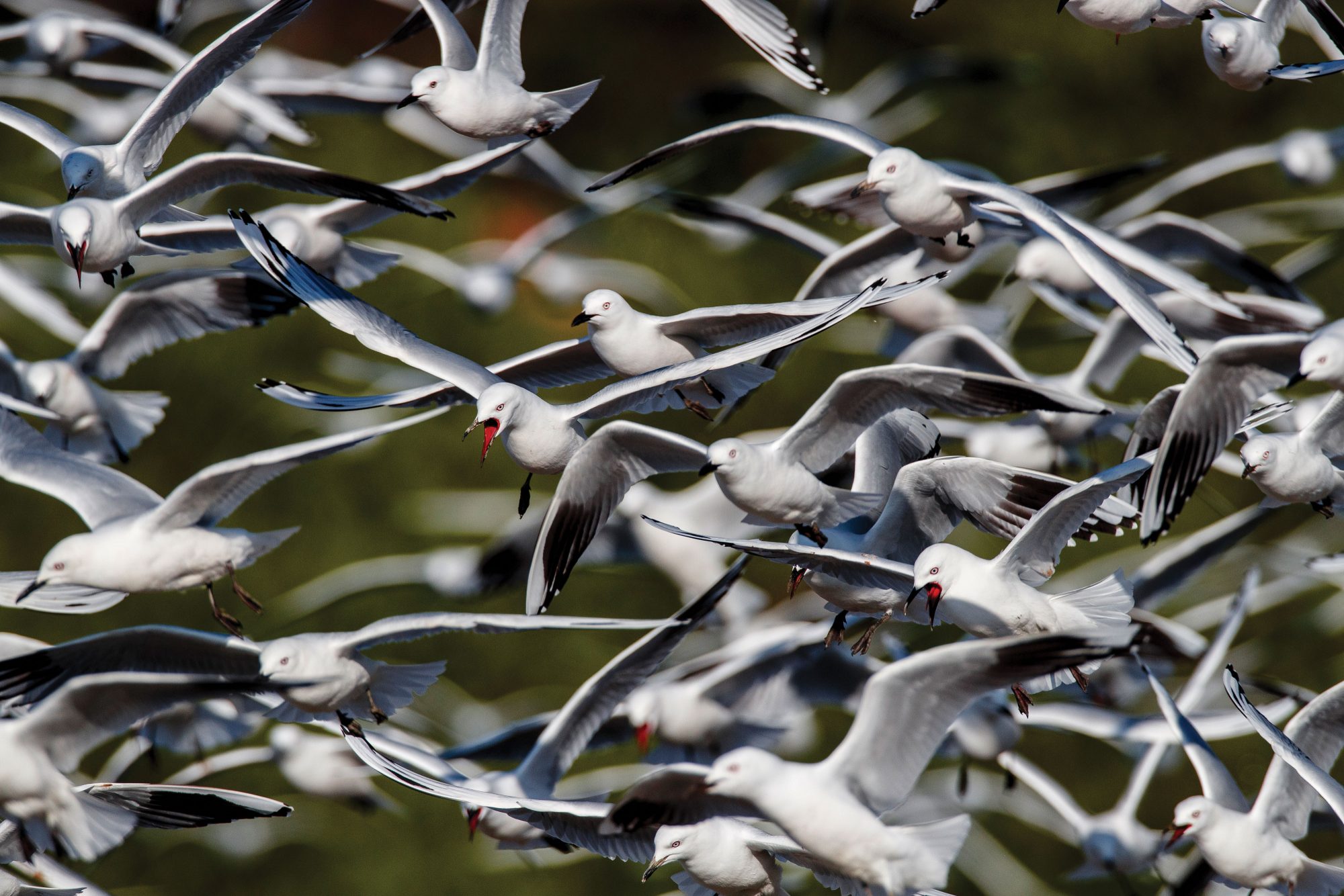
Tending the flock
New Zealand has only one endemic gull, the tarāpuka, and it’s more endangered than the takahē, the hoiho and all five species of kiwi. Its survival depends on the preservation of the South Island’s unique braided-river ecosystems.
Ashburton sits on State Highway One amid one of the most intensively farmed landscapes in the country. It’s a prosperous rural services town with all the box stores and agricultural equipment yards you’d expect. All day, traffic grinds across the Hakatere river bridge on the south side of town, oblivious to the astonishing variety of wildlife the river hosts.
Most years, an enormous colony of one of New Zealand’s most endangered birds forms within a stone’s throw of this bridge.
This year, the black-billed gulls, or tarāpuka, have chosen to nest further downstream, towards the river mouth.
Here, a little jumble of baches sits atop a cliff overlooking the river, its wide gravel bed streamed with braided channels. An estuary has formed behind a long gravel bar where whitebaiters stand as they wait for their quarry to appear.
When I visited in September, it was early in the breeding season, but already several thousand tarāpuka had gathered, their cacophony drowning out the river as it raced through its final curves. Small flocks of gulls swooped in from the sea all morning, bolstering numbers even further and adding to the racket.

Across the river, thousands of spotted shags were roosting on the bar. Last year, 8000 pairs of white-fronted terns bred here, and the tarāpuka colony has numbered up to 10,000 nests in the past. Pied stilts, wrybills, pied oystercatchers and banded dotterels also lay their eggs on the riverbed.
There are few places in New Zealand where this kind of abundance and diversity is found in such a small area.
“It’s David Attenborough stuff,” says wildlife consultant Mike Bell. “An absolute phenomenon of nature.”
The area is, of course, highly protected, closely monitored and off-limits to most human activity. Right?
Well, no.
Motorbikes and four-wheel drives zoom across the bar. Jetboats roar downstream, pulling doughnuts in the lagoon and sending the shags skyward. Cats and other predators prowl the lupins.
Local attitudes to the gulls range from indifference to active malice. Vehicles occasionally plough through the colonies, while bored gun enthusiasts have been known to use the birds for target practice. To most people, they’re just seagulls—members of that tribe of chip-bludging, carrion-scavenging, squabbling, squawking, pooping pests of the sky.
But standing in this riverbed, watching these graceful little birds swooping in, it didn’t make sense. Why don’t we revere this unique, critically endangered species as much as our kiwi and takahē? What have we got against gulls?
Two weeks later, New Zealand Geographic photographer Richard Robinson and I are on our way to Southland, the stronghold of the tarāpuka.
Emerging from the hills of Otago, we hit the Southland Plains at Gore, where the beige Mataura River, loaded with snowmelt, slides under the town bridge.
Braided rivers have formed in only a few places on Earth, where young mountains are in a state of rapid decay. Other than New Zealand, large braided river systems are found in the Himalayas and parts of North America.
As we head inland, the Hokonui Hills anchor us to the north. Beyond lie the Takitimu Mountains and the greywacke folds of the Thomsons and the Eyres, all thrust up in the past five million years. The Southland Plains formed from the rubble carried down from these hills by four rivers: the Aparima, Oreti, Mataura and Waiau.
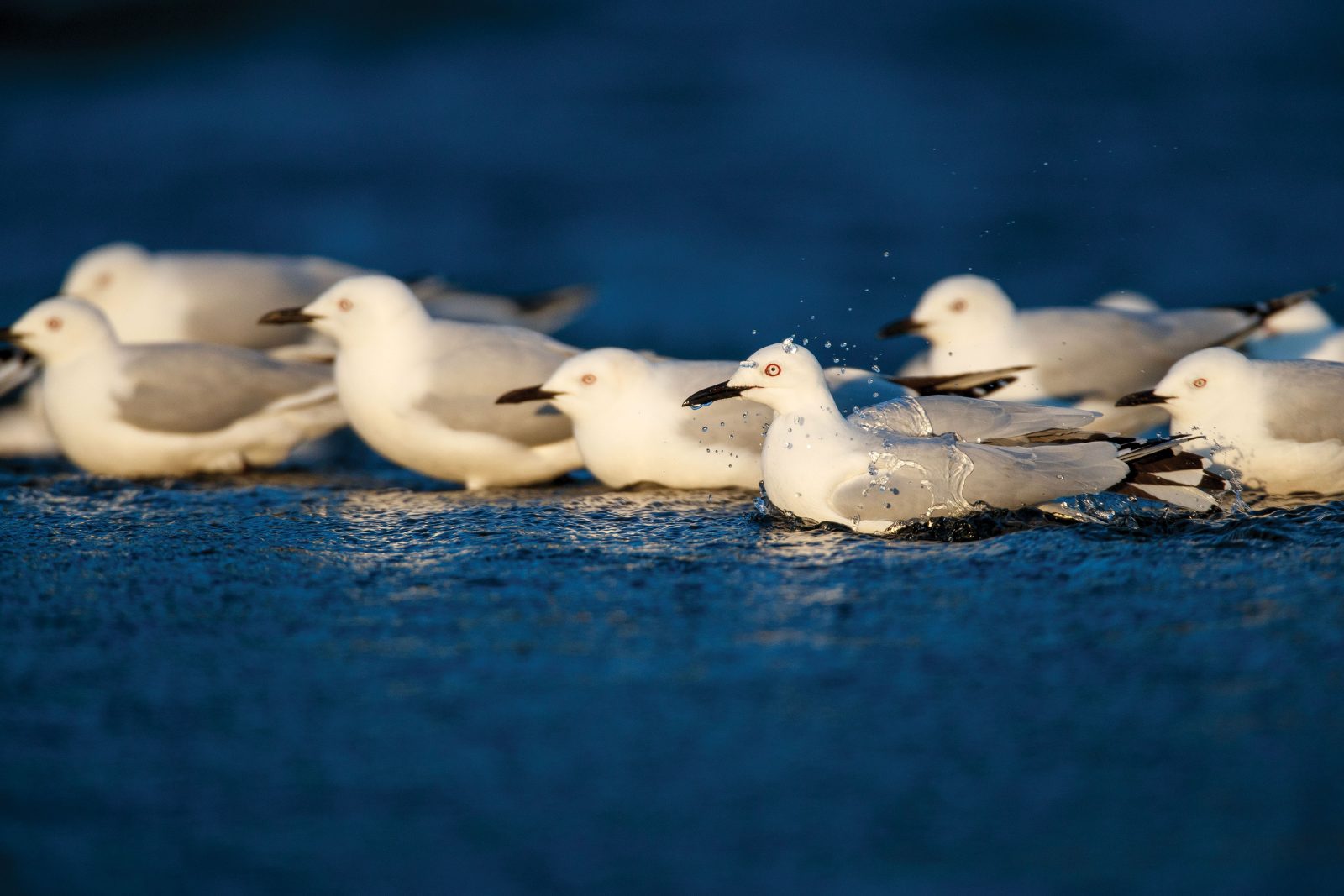
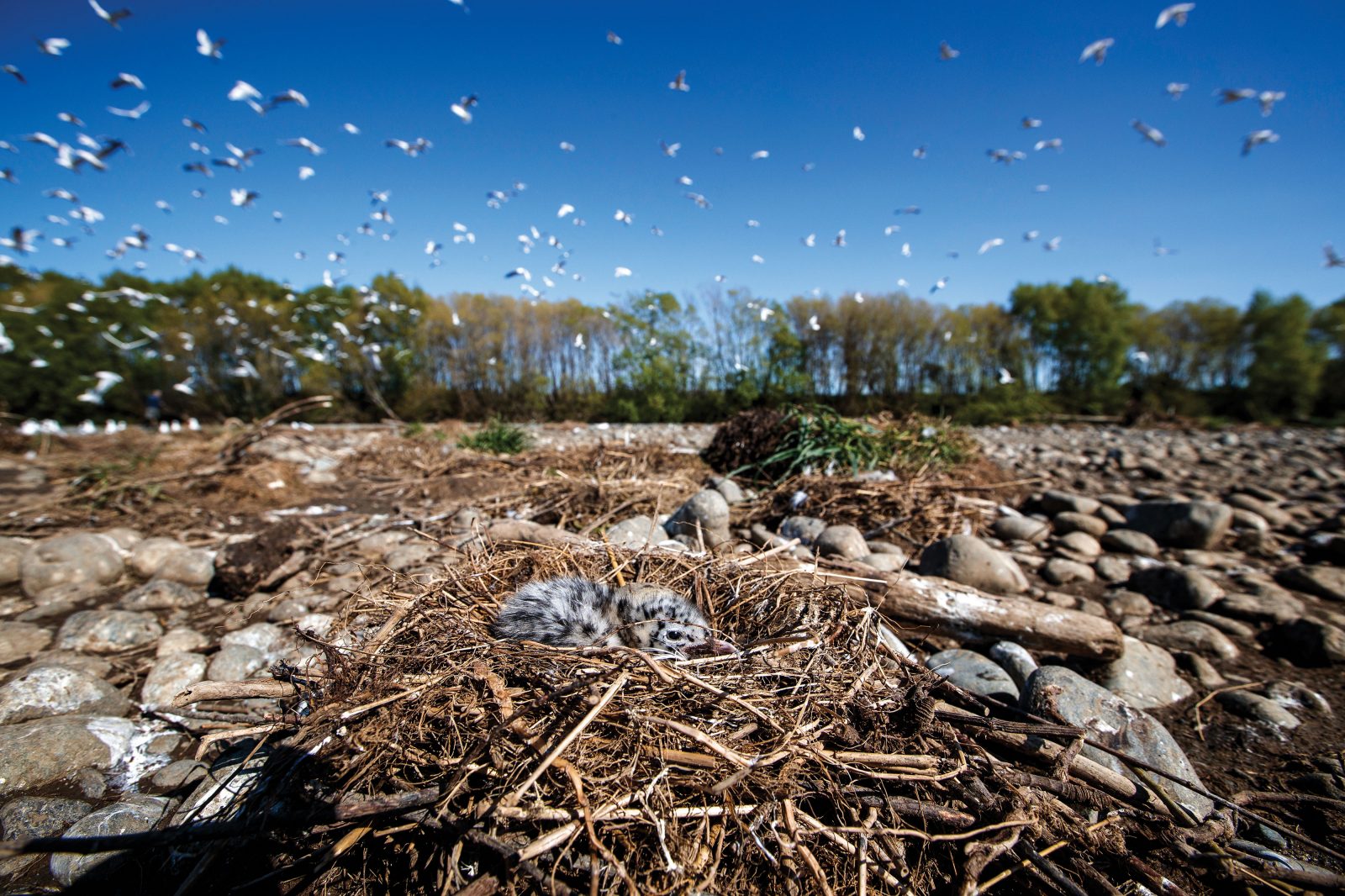
a month.
When the ancestors of tarāpuka arrived here from Australia 250,000 years ago, they adapted to this unique habitat, the gravel islands between the river braids providing a substrate for nests.
Today, up to 70 per cent of the country’s tarāpuka population is found in Southland, but despite their apparent profusion, numbers here are significantly less than what they once were.
Anecdotes from the 1960s and 1970s tell of flocks so large the sky went black as they rose to feed in the morning.
Behind ploughs and harrows, tarāpuka mobbed in their thousands. Farmers were forced to wear raincoats so as not to be coated in droppings. The birds flocked so thickly around tractors they’d get trapped in the cab, or were inadvertently ploughed into the ground.
According to a 2009 thesis by University of Otago PhD student Rachel McClellan, an estimated 140,000 black-billed gulls bred in Southland in the 1970s. Today, that number may be as low as 15,000. The drop is seen as evidence that the population is in rapid decline, largely because of predators and the loss of breeding habitat. Further modelling carried out by McClellan and others in 2015 predicted a continued decline of 77 per cent over the next 30 years. As a result, the birds are now classified as critically endangered, and recognised as the world’s rarest gull.
Whether tarāpuka are in as perilous a state as this threat ranking suggests is contentious. Gulls are difficult to count across their range, and inconsistencies in data collection prior to the 1980s may be presenting an unnecessarily bleak picture.
One theory says gull numbers were artificially high in the 1960s and 1970s, their population supercharged by the worms and grubs unearthed by farmers’ ploughs—and since farmers have converted from sheep to dairy, and switched from ploughing to direct drilling, their numbers have returned to more ‘normal’ levels. But this is impossible to prove, as almost no scientific information about the birds exists prior to the 1950s.

The literature on tarāpuka remains sparse. McClellan undertook her PhD after realising how little science had been done on them. She spent months in Southland studying tarāpuka and gathering stories from locals. The earliest records depict the gulls living in a very different manner—hawking insects on the wing above tussock and forest.
“There wouldn’t have been any pasture,” she says. “There would have been swamps and bogs and forest. So what they were eating back then would have been substantially different. In Southland today, they’re primarily taking their food from pasture—I would say it’s well over 95 per cent. I could almost count on my hand the number of times I saw them feeding in a river.”
We take gulls for granted, forgetting they are among the most intelligent and adaptable of birds, capable of thriving in highly modified habitats, including the world’s biggest cities. It’s this adaptability that has allowed them to spread around the globe.
“If it was just a question of food, black-billed gulls would probably increase in a modified landscape, because there’s abundant food for them now,” says Christchurch-based ornithologist Andrew Crossland. “But the problem for them is losing their nests and their chicks, either through floods, disturbance or predation.”
[Chapter Break]
On the banks of the Aparima River in western Southland, a large tarāpuka colony is in the early stages of formation. It’s a furious snow globe of birds, a mad Hitchcockian scene. When a hawk, or kāhu, flies over the colony, the birds rise as one, ballooning skyward in their thousands, undulating as a single organism to confuse the predator.
Tarāpuka breed in a fickle landscape, gathering on gravel banks that may not be there next season—or even next week. Their colonies are at perpetual risk from flooding, so the gulls have become hit-and-run breeders. Their strategy is to breed in close quarters, in high synchronicity and quickly, raising chicks in just a few weeks.
And always, they must be prepared to cut their losses and start again. Tarāpuka will re-nest several times in a season if their original clutches are taken by predators or washed away. In a natural river system, floods are necessary for flushing out weeds and combing the gravel clean, providing a clean substrate for nesting.
But the Aparima, like many braided rivers in New Zealand, is clogged with weeds. Willows line the bank, fencing the channels and stifling its tendency to wander across the plains. Flood fortifications on both sides reinforce this imprisonment. Agriculture and civilisation can’t tolerate a braided river’s natural movement.

Department of Conservation (DOC) scientist Richard Maloney points out how the riverbanks are thick with broom, gorse and dense mats of introduced grasses. All of these weeds consolidate the gravel, so the river can no longer shift it, even in a big flood.
“The river’s been modified so long now it’s formed single channels and high banks,” he says. “So the whole braided-river ecosystem here is broken.”
With Maloney is local gravel contractor Grant McGregor, who grew up on the Aparima. As kids, he and his mates spent their lives on its banks, the tarāpuka their constant companions. He’s spent the past 50 years making his livelihood from the river, running the gravel-contracting business owned by his family. Now, he feels it’s time to give something back.
McGregor’s company has recently finished extracting gravel from this area of the river, but before vacating the site, he is using heavy equipment to leave the riverbed in a more natural form. His restoration technique involves scraping the tops of weed-infested islands down to just above river level, then waiting for the next flood to rush over the top, reshaping the gravel according to its own natural laws.
“When you’re a gravel contractor you’re considered to be an environmental disaster,” he says. “So it was just to be seen to be leaving a good footprint behind.”
McGregor worked with DOC and other agencies for several years to get the project rolling.
“Living on the river and extracting gravel on the river, you know what works and what doesn’t,” he tells me. “We just needed the expertise to put it on paper.”
Last year, the plan became action, and before the diggers had even vacated the first site, gulls flocked in to lay their eggs. McGregor is proud they have returned again this year.
“Because we do it in a slow way, if something doesn’t work, we can change it,” he says. “Nature’s letting you know if it’s working or not because it’s fixing things behind you.”
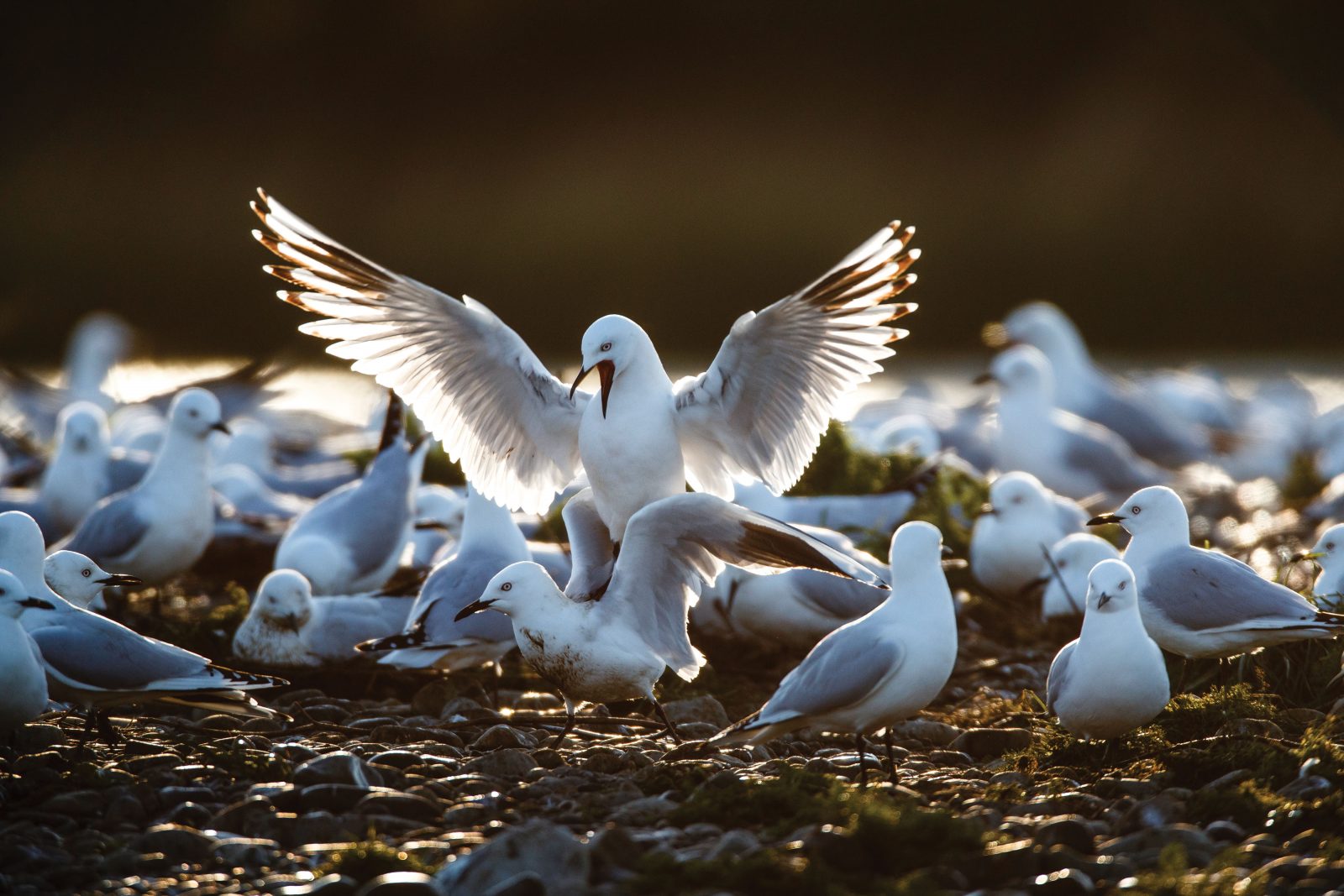
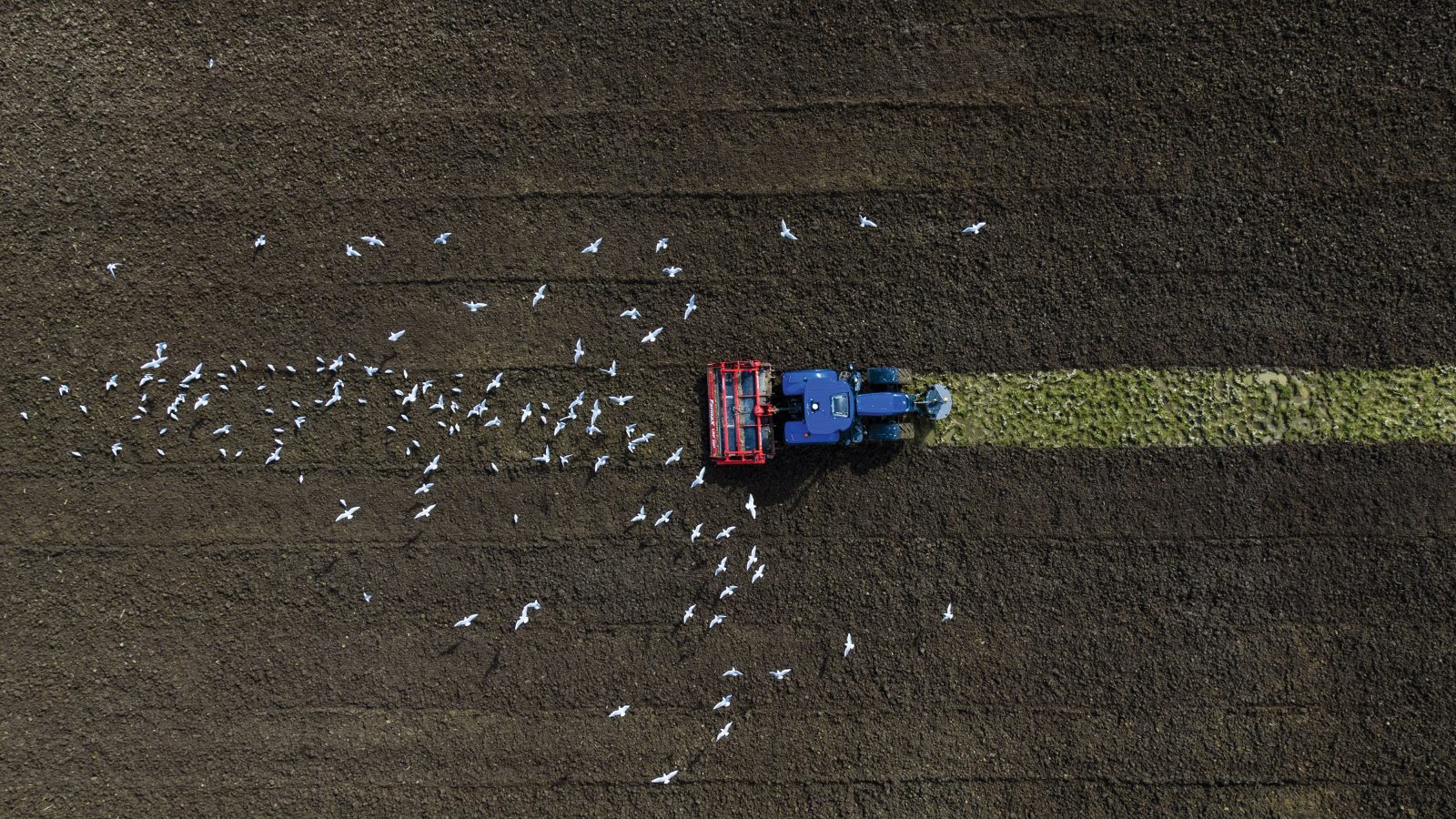
Maloney needs to count nests, so we wade across the river and enter the breeding area. The entire colony lifts with a deafening shriek. The nests have a rich, oily smell that reminds me of a woolshed.
Each one holds two or three eggs, which are intricately speckled to match the river stones. In some nests, chicks have already hatched, little puddles of grey fluff gently ruffling in the westerly. We tread carefully—it would be easy to crush a nest with a thoughtless step.
Now that McGregor has created this habitat, the next challenge is to keep the gravel islands clear of weeds, with minimal disturbance, and preferably without using spray.
“What we’re trying to do here,” says Maloney, “is figure out ways we can improve the survival of a single colony, and then scale it up into all the other colonies around the country.”
Tarāpuka travel around New Zealand, and may breed on different rivers from season to season, so protecting one colony is not enough.
“What we need to do is manage for most or all of the colonies in New Zealand all at once,” says Maloney. “And that’s a really tricky thing because there are a whole raft of complex issues.
“Half a dozen traps in the breeding season won’t cut it here. You can’t build a fence in this environment. The weeds invading these rivers are aggressive colonising weeds. So all of those things make it urgent and difficult—but, I think, achievable.”
[Chapter Break]
On the Oreti River, just upstream from Lumsden, there’s a large tarāpuka colony most years. All through a blustery spring evening they swoop in low over the town’s rooftops and streets. On summer nights, I’m told, they hover around the streetlights in their hundreds to collect moths on the wing.
Most locals I speak to pay little attention to the gulls. They’re just part of the landscape, rendered invisible by their ubiquity. Many people are surprised to hear they’re endangered, and some confuse them with other gull species. Even here, in the heart of tarāpuka country, a nonchalant attitude towards gulls persists.
There are three species of gull in New Zealand, all different in behaviour and habitat. (None of them, however, are called seagulls.)
Tarāpuka (Larus bulleri) are found mostly in the South Island, but in recent decades, for reasons unknown, have become more common further north, breeding on lakesides and beaches as far north as Lake Rotorua and Hawke’s Bay.
The red-billed gull, or tarapunga (Larus novaehollandiae), breeds in more-traditional gull habitat, on coastal headlands and cliffs. They are endangered, too, classed as ‘nationally vulnerable’, but unlike tarāpuka, they are also found in Australia and New Caledonia. These gulls are the noisy ones seen squabbling for leftover fish and chips in many towns.

Then there’s the southern black-backed gull, or karoro (Larus dominicanus)—the big one with the yellow bill and black saddle seen just about anywhere in New Zealand, including in cities. This gull is widespread around the southern hemisphere.
Karoro are one of the few native species to thrive in post-agricultural New Zealand, quickly adapting to farmland and urban environments alike. In particular, landfills provide rich feeding opportunities. As a result, they are super-abundant, and one of the worst predators of tarāpuka—perhaps more destructive even than introduced mammals.
“The black-backs have figured out that they can just walk in around the edge of the colony,” says Claudia Mischler, a wildlife consultant specialising in braided rivers. “And because they’re so much bigger they can just push the black-bills off and then eat the eggs or small chicks. They’ll demolish entire colonies.”
Mike Bell, of Marlborough-based Wildlife Management International, tells a similar story. He says karoro will wait for tarāpuka eggs to hatch, then eat the chick, thus gaining a more generous meal—almost as if they were farming them.
Conservationists have now started culling karoro in order to give tarāpuka a better chance.
“Braided rivers are not like a forest system where you can take out the predators and suddenly the birds do well, because there’s so many aspects to it,” says Bell. “There’s introduced predators, there’s native predators that have got out of balance, there’s weed encroachment and water extraction. There’s rivers silting up and there’s pollutants.
“They’re really complex systems, which mean that some of the traditional conservation responses don’t work as readily. They are a real conservation challenge for New Zealand and one that only in the last five or ten years are really starting to be grappled with.”
[Chapter Break]
Robinson and I head north again, out across the Canterbury Plains. In this manicured country, where virtually nothing wild remains, the only things moving in the air are kāhu and karoro, common as muck, threading through the sky on their constant errands.
Here in Canterbury are some of the country’s most impressive braided rivers, the Rakaia, the Rangitata and the Waimakariri, and this is also where the battle for river water is at its most intense.
Karl Russell of Arowhenua Marae grew up gathering food on the Opihi River in South Canterbury. Gull eggs were then an important part of mahinga kai, as they had been for generations.
“The kōrero I know is when the gulls first laid, [people] would collect all the eggs, which forced the birds to lay again and these eggs were then allowed to hatch,” he tells me. “When the chicks got to a certain age, before they took off, they would harvest a bird from each nest, if there were two birds in a nest. If there was only one bird, they’d leave it. We’re talking big flocks of birds in those days.”
Russell and others are exploring the idea of once again harvesting karoro eggs, both as a source of kai but also as a means of controlling the birds’ numbers. This summer, gull eggs will be tested for agricultural chemicals to determine whether they are safe to eat.
We follow the Rakaia deep into the mountains. The road clings to the side of the valley, crossing deep gulches of gravel that pour out of the hillsides. The river below is a silvery-grey tangle gleaming in the afternoon sun.
Where the road ends, we watch a handful of tarāpuka forage above tussock islands in the riverbed. Beneath battlements of snow and rock, they look like shredded paper on the wind.
We turn and follow the river back out towards the ocean. At the mouth of the nearby Rangitata, we walk out along the bar, which is busy with gulls, geese and terns. A milky sea dumps itself against the land, which rattles under every breaker.
Quad drivers roar past on their way to the mouth to fish for kahawai. One stops and introduces himself. Paul Hodgson has been fishing here for 30 years, and the decline in the river’s health has left him dismayed and angry.
“It’s a sandpit,” he says, looking out at the mudflats surrounding the estuary. “They’ve stuffed it.”

So much water is being abstracted for irrigation, he says, that the once-mighty rivers of Canterbury are now shadows of their former selves. Once, he tells me, the force of the river set up standing waves 200 metres out to sea. Now the entire Rangitata drains apologetically through a single narrow channel. At low tide you can walk across it.
The effect of reduced flows on tarāpuka colonies is not entirely clear, but lower flows make it easier for predators to reach island-nesting colonies.
Encouragingly, it seems Canterbury’s braided rivers are beginning to receive some of the conservation attention they badly need. Frances Schmechel, Environment Canterbury’s principal biodiversity adviser, runs numerous projects conserving braided-river habitats and the species they hold.
“Historically, braided rivers fell between the cracks,” she says, “because there was no one agency or organisation responsible for them.”
Back at the Hakatere river mouth, near Ashburton, Forest and Bird’s Edith Smith and other volunteers keep a close eye on the tarāpuka that breed there every year.
Controlling human disturbance, says Smith, is an ongoing concern for the group. If the birds are disturbed, especially at night, it can cause the parents to abandon their eggs or chicks and the entire colony to fail.
The Hakatere volunteers clear weeds in an attempt to provide good nesting ground for the gulls, and monitor traps around the colonies. Their efforts, however, are not always appreciated by the locals at the river mouth, some of whom feel cats and hedgehogs have just as much right to the river as native birds.
[Chapter Break]
It’s an immaculate day in the Mackenzie Country, the sky clean above the alps. Here, the country’s tallest mountains stand at the heads of powder-blue lakes, and the Tasman River weaves across its floodplain below Aoraki/Mt Cook.
This is Claudia Mischler’s office. She works mostly with black stilts, or kakī, but wrote her PhD on tarāpuka, studying the birds’ genetics. The gulls take much of their food from human activities, such as salmon farms and irrigated paddocks. It’s likely irrigation water draws worms and other invertebrates to the surface, where the gulls are able to get hold of them. In the absence of natural foraging opportunities, these gulls are now heavily dependent on farming for sustenance, particularly pasture.
“Viticulture, on the other hand,” Mischler tells me, “is disastrous. There is nothing there for birds.”
Tarāpuka in the Mackenzie have had to adapt to massive changes. Records from the 1960s show large numbers once nested in river areas now submerged beneath Lake Benmore and Lake Ruataniwha. The recent influx of dairy farming to the region has once again radically altered the environment here.
Mischler takes me out onto the Tasman. This is as pristine a braided river as New Zealand has, and the difference between this and some of the weed-clogged, single-channel rivers I’ve seen elsewhere is striking. There are few weeds, and as a result the river is free to meander at will on its way to Lake Pukaki.
More than a decade of predator control has allowed the natural ecosystem to flourish. Wrybill and dotterels scurry all over the place in the warm light, and dozens of terns hang on the air, falling in rhythmic succession upon the river to pluck invertebrates. The mountains cradle us on three sides, and to the south, Lake Pukaki lies as unruffled as a motel bedsheet.
In front of this famous landscape, tarāpuka, the birds we mostly ignore, gather for another breeding season.
The story of tarāpuka challenges how conservation in the 21st century should be conducted. It’s not as simple as protecting the birds from human activity—because human activity is largely what sustains them. Surviving in an environment almost entirely altered since people arrived, the fate of tarāpuka is intricately entangled with ours. It’s time we better appreciated these birds, their adaptability and resourcefulness—attributes we’re proud to call our own.
















